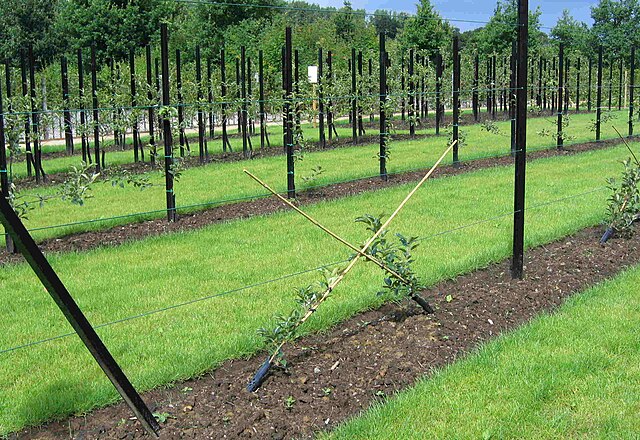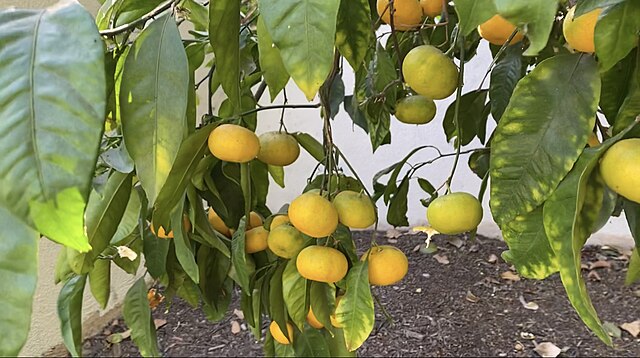Fruit trees are grown in a variety of shapes, sometimes to please the eye but mainly to encourage fruit production. The form or shape of fruit trees can be manipulated by pruning and training. Shaping and promoting a particular tree form is done to establish the plant in a particular situation under certain environmental conditions, to increase fruit yield, and to enhance fruit quality. For example, pruning a tree to a pyramid shape enables trees to be planted closer together. An open bowl or cup form helps sunlight penetrate the canopy, thus encouraging a high fruit yield whilst keeping the tree short and accessible for harvesting. Other shapes such as cordons, espaliers and fans offer opportunities for growing trees two dimensionally against walls or fences, or they can be trained to function as barriers.
A test site with several fruit tree forms located at Gaasbeek Castle
A community apple orchard originally planted for productive use
Description of the Bouché-Thomas fruit tree form
Photo of the LePage fruit tree form
A fruit tree is a tree which bears fruit that is consumed or used by animals and humans — all trees that are flowering plants produce fruit, which are the ripened ovaries of flowers containing one or more seeds. In horticultural usage, the term "fruit tree" is limited to those that provide fruit for human food. Types of fruits are described and defined elsewhere, but would include "fruit" in a culinary sense, as well as some nut-bearing trees, such as walnuts.
A plum tree with developing fruit
Mandarin Orange tree with fruit
An almond tree in bloom







